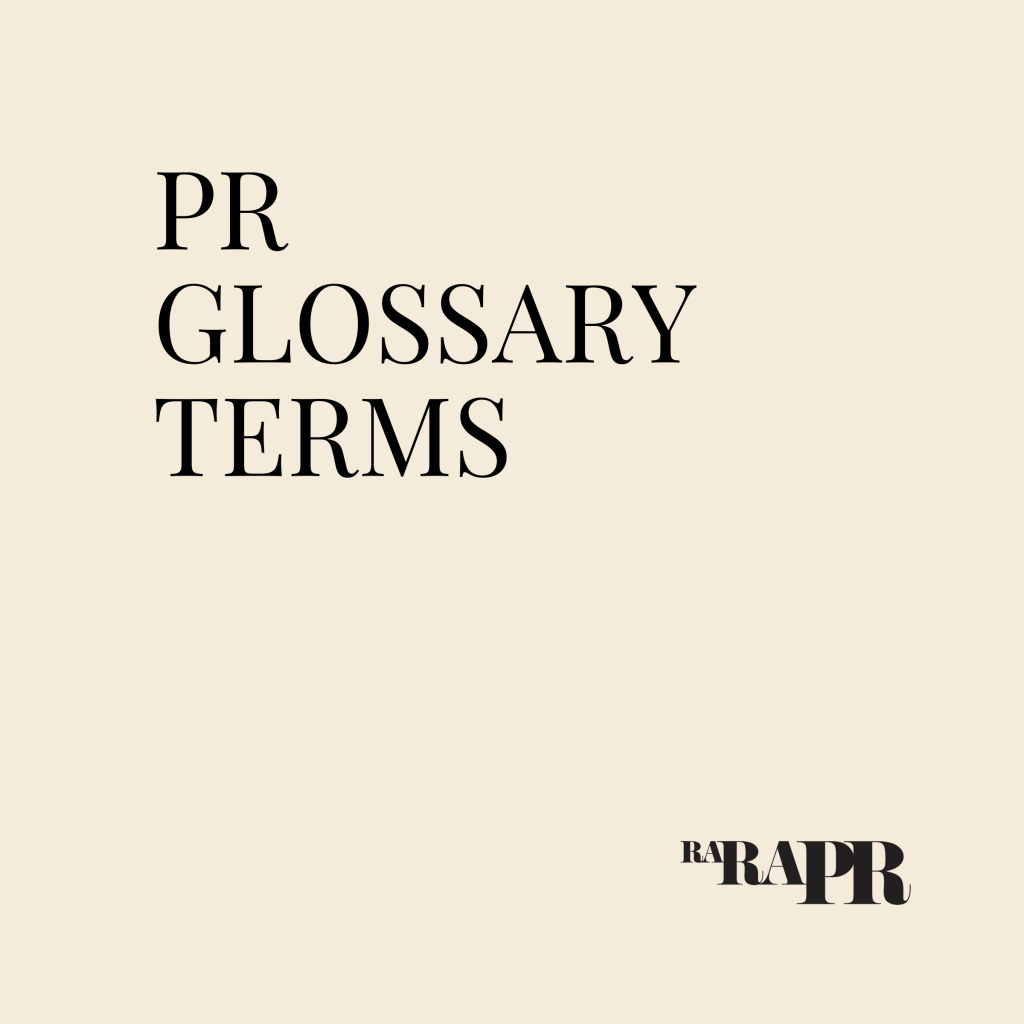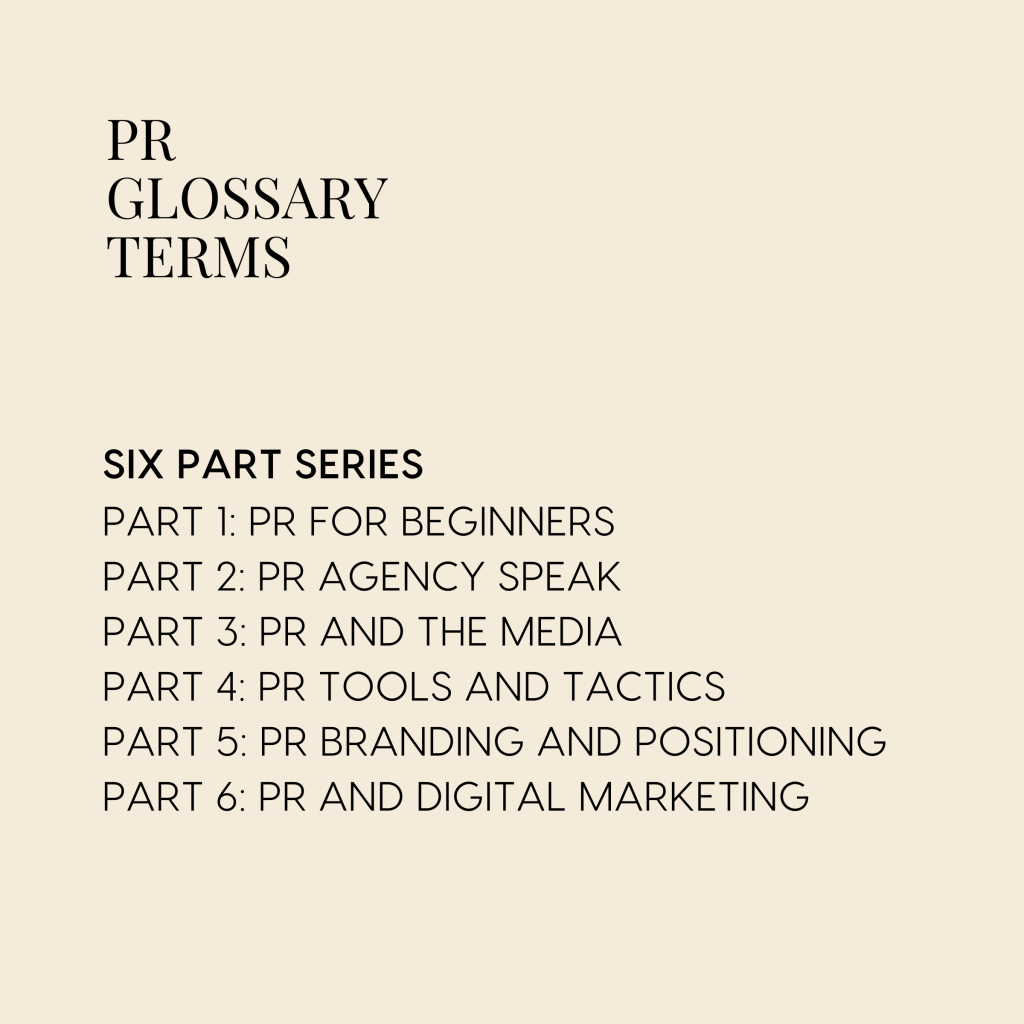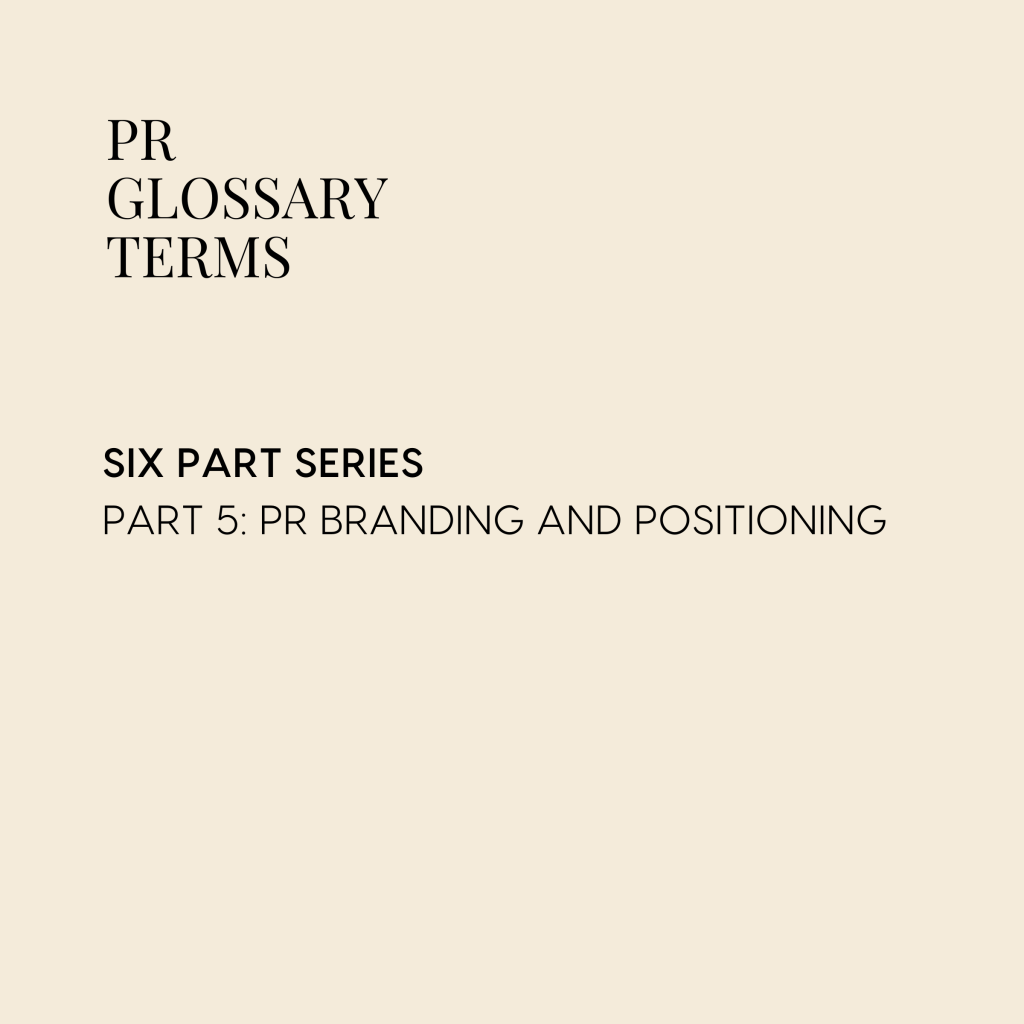

PART FIVE | PR GLOSSARY TERMS |PR AND BRAND POSITIONING
> This blog is part of a six part series on all things PR Glossary Terms. Get around it if
- You run a business and you need a PR campaign, self-managed or not.
- You’re considering a career in PR.
- You’ve graduated with a PR degree and want to talk the talk or at least understand it. (In my experience most PR graduates have never come across these everyday PR terms. Believe it).
- You have a friend, child or sibling working in PR and you think PR is similar to Personal Assisting or some such, not sure, maybe.
- You’re a client to a PR agency or considering hiring a PR agency. (You know you need their help but you’re not sure what they’re saying, or why or what the hell they’ll be doing when you book them).
- You’re a supplier providing a service or collaborating with a PR agency.
PR TOOLS AND BRAND POSITIONING SPEAK, LET’S GO…
Your WHY: The reason your business exists. Finding your why is an opportunity to unearth what you truly believe in; so that your audience will understand more easily not just what you do and how you do it, but why you do it. WHY goes much deeper than just selling a product or service to make a profit. Money is a result of why your business exists. But the WHY is the purpose, cause and belief that drives the organisation. Your WHY is about what the company believes. And your WHY becomes the linchpin of how you communicate. Be sure to Google Simon Sinek for the man that articulates the importance of this brand process so well. His ability to communicate why finding your WHY is important started a global movement that will change businesses forever.
Your Vision: Your vision is the end-result of reaching all of your ideal outcomes and everything you set out to achieve. You can define visions for various departments and projects within your organisation.
Your Mission: Defining your businesses mission is an important part of the strategic planning process of brand positioning, consistent marketing and business success. This is about how you’re going to reach your vision. The house for example is how it looks, but the mission is how you’re going to build it. The mission articulates What you do, who you do it for and how you do it.
Brand Values: A more modern take on Brand Values is Your Ethos. Brand Values are the guiding and core principles that direct the culture and decision making within your business. Not to be confused with code of ethics which outline procedures to put those values into place and ensure they’re upheld.
Target Audience: Your businesses people. Your tribe. The people who will most benefit from your product or service and the value it brings. Target audience refers specifically to a group of consumers you want to target. This includes their consumer behaviours and psychographic profiling.
Target Market: Similar to target audience, however target market is more general. For example target market is a segment of people who you’ll target communication efforts to i.e. women aged 30 – 40. And the target audience would be more specified i.e. women aged 30 – 40 who are mums, live in Melbourne, enjoy visiting ceramic markets and reading Peppermint Magazine (me).
Brand Voice: The profiling and tone-of-voice for your business which helps to personify your brand and provide consistent communication guidelines.
Tone-of-Voice: Just in the same way you might share one message differently depending on who you’re speaking to; tone-of-voice is changeable but should be defined for you business and its various communication platforms. i.e. light-hearted, entertaining, authoritative, educational, witty, approachable. Tone-of-voice helps to build emotional connection with your audience through expression and can change slightly depending on the situation and platform.
Brand Values: The set of values that your brand is guided by. It is important to integrate your brand values at every touch point of your marketing and PR. Brand values that are communicated clearly and consistently help to build consumer awareness and trust in your brand.
Buyer Persona: This is an in-bound marketing and content strategy which involves defining with great detail your ideal customer (and those you wish to exclude). You’ll need to consider what their pain points are, what experiences they seek out as well as demographics, behaviour patterns, motivations, goals, and psychographics. You don’t need to limit your buyer persona to just one; but definitely not more than three. Buyer personas help you to attract, engage and target your audience with information that’s valuable to them.
USP: USP stands for Unique Selling Proposition. How is your business unique, why does it matter, and what is its point of difference? We like to change it to UBP with the ‘b’ representing the word ‘Being’ – aka Unique Being Proposition. Instead of talking about what you want to be, it’s equally as important to BE it, and represent your brand through communications accurately. Getting clear on your USP or UBP provides clarity on your key messaging, social media content strategy and of course your media outreach strategy – the USP is the linchpin of all communication for your business. In order to define it, think about the characteristics and features that make your product or service unique. Consider what sets your business apart from others in the same or similar industry or product category.
>> READ ON FOR PART SIX OF THIS SIX PART SERIES.



